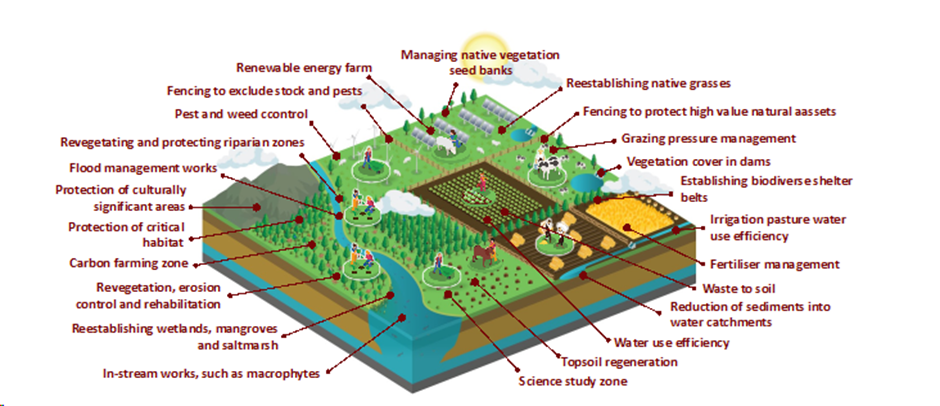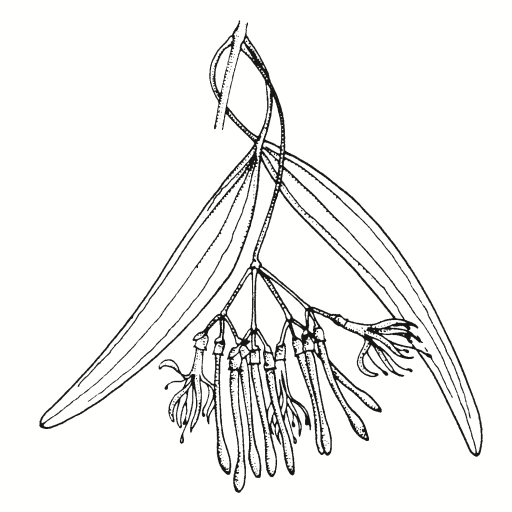Deeper Reading - Natural Capital
Understanding your farm’s natural assets and the values they provide is a great first step towards making well-informed farm management decisions that can improve your productivity, profitability and farm biodiversity. Your farm’s natural assets provide a range of benefits or values and services to your farming business – shade, shelter, pollination, pest control. This combination of natural assets and the services they provide is called natural capital.
Firstly, what is Natural Capital?
Natural capital is the world’s stock of natural renewable and non-renewable resources (including soils, air, water, trees, plants, animals, and all living things) that provide a flow of benefits or ecosystem services (such as food production, drinking water supply, fuel, building materials and medicines) to people.
The reason we use this ‘natural capital’ lens is to help you see your natural assets in a similar way to traditional forms of capital, such as financial, built, human and social capital. For example, if you invest in natural capital, you create value; if you degrade natural capital, you reduce value.
Understanding your natural capital may also help you translate their value to governments, businesses, and communities who are increasingly willing to reward land managers for protecting, restoring, and improving those natural resources through markets, premium products, and credentials.
Taking a Natural Assets Snapshot
The first step in understanding your natural capital is to lay out what natural assets you have in your patch. This can be as simple as writing down a list of all the natural assets on your farm and their condition. Examples could include:

Number, name and source of fig here
The more detailed you can get on the type, condition, or size of the natural asset the better. So rather than writing your “unfenced bush down the back paddock” try to capture details both good and bad like “Two acres of unfenced weedy White Cypress Pine woodland, home to superb parrots”. You could also map your farm’s assets to display this visually. If you need help with this, you could contact your local Landcare group or government agency or look online at mapping to help you develop this.
What value do these services provide?
The next step is to write next to these natural assets some values or ecosystems services these assets do (or could) provide. Examples could include: pollination, erosion control, improved water quality, shelter and shade for livestock etc (see figure below):

Number, name and source of fig here
Some natural assets will have many values. Understanding threatened species nearby or on farm can also help you prioritise actions and management.
Bringing it together. What could be protected, restored or enhanced?
Bringing together your natural assets and their values can help understand how you currently manage these natural assets. It can also help you weigh up the value of these assets to you, your farm and your community.
You can then create a plan for your future management. What farm management actions could you do to help you improve the condition of your natural assets and what could the co-benefits of this be?
Consider what opportunities there may be to access funding and markets to support this. Also consider the risks if you do nothing. Will the natural assets and their values decline? Will you be able to access future supply chains?
Having a clear snapshot of your farm’s natural capital now and the plan for the future means you can prioritise improvements and seize market opportunities.
There are also opportunities to create an in-depth Natural Capital Account or profile. Contact your local Landcare group or Local Land Services for more information.
Environmental Markets
Assess your farms existing natural capital profile (DR natural capital ) including your current emissions profile. There are numerous online tools for doing this and they are evolving, so investigate and compare them before deciding on which one to use. Be open to trying one or two and compare the results, ease of use and usefulness of results.

